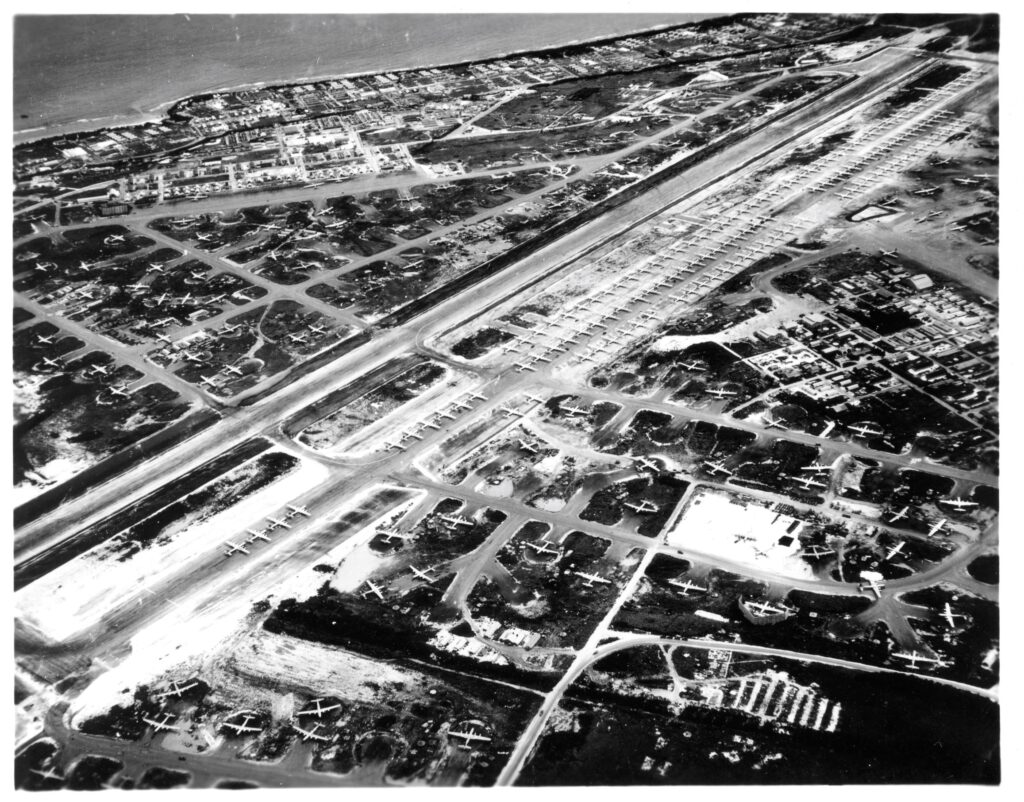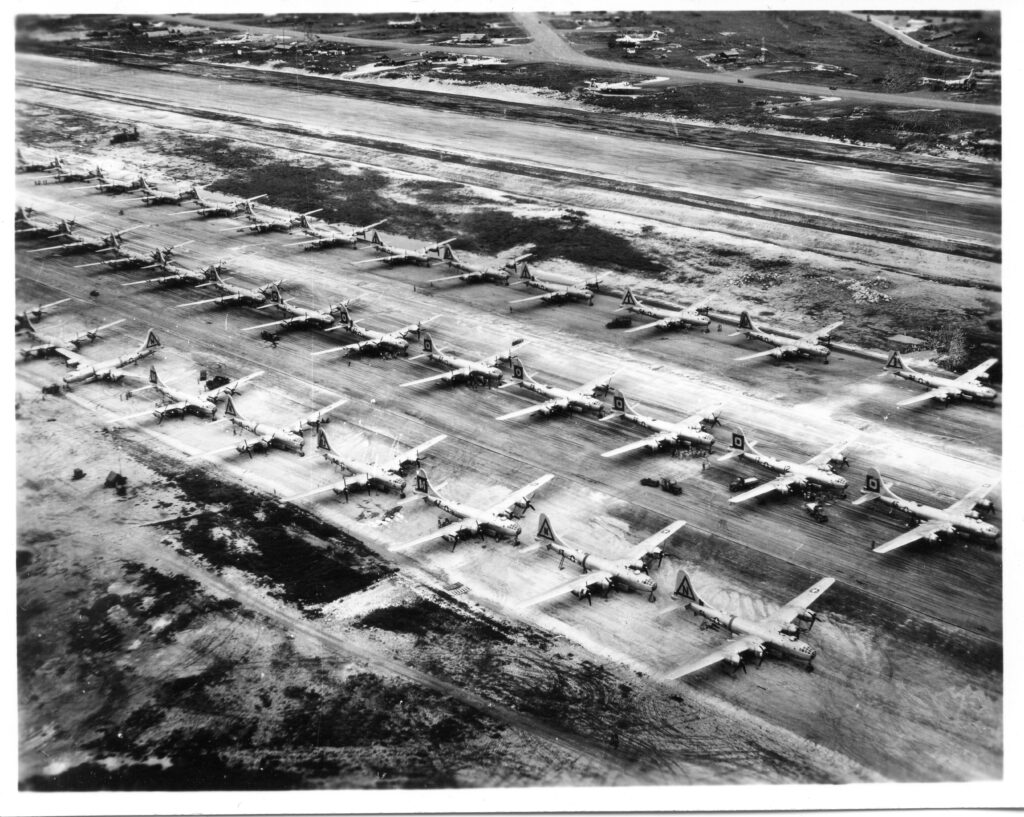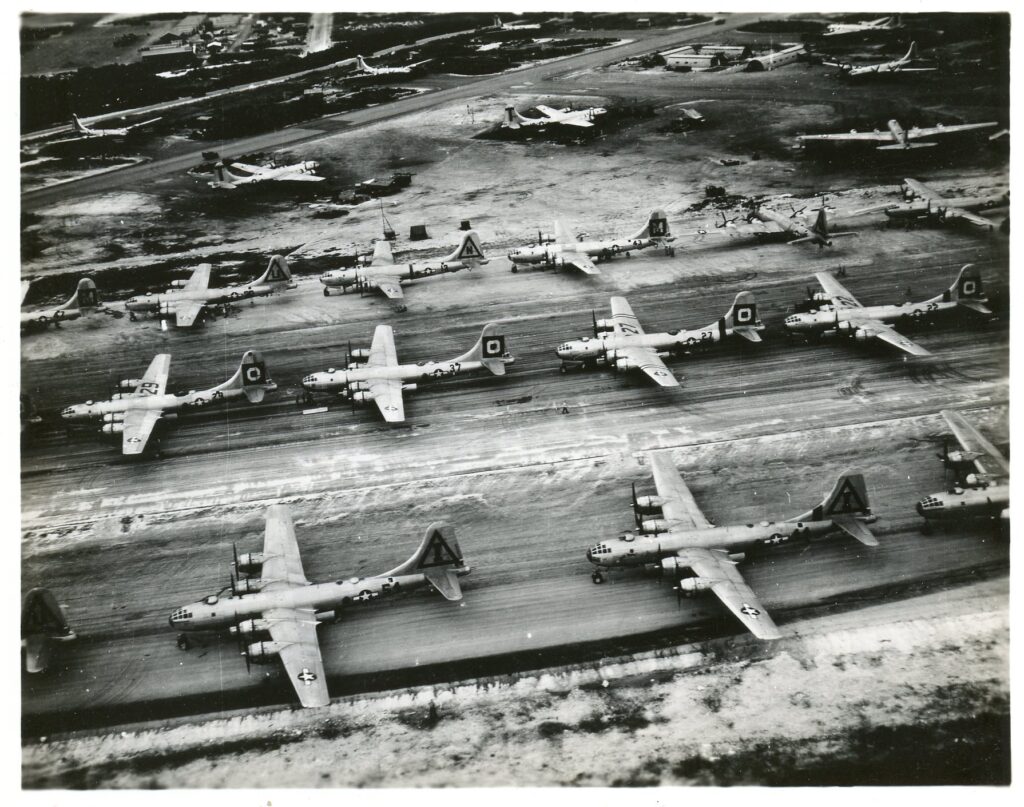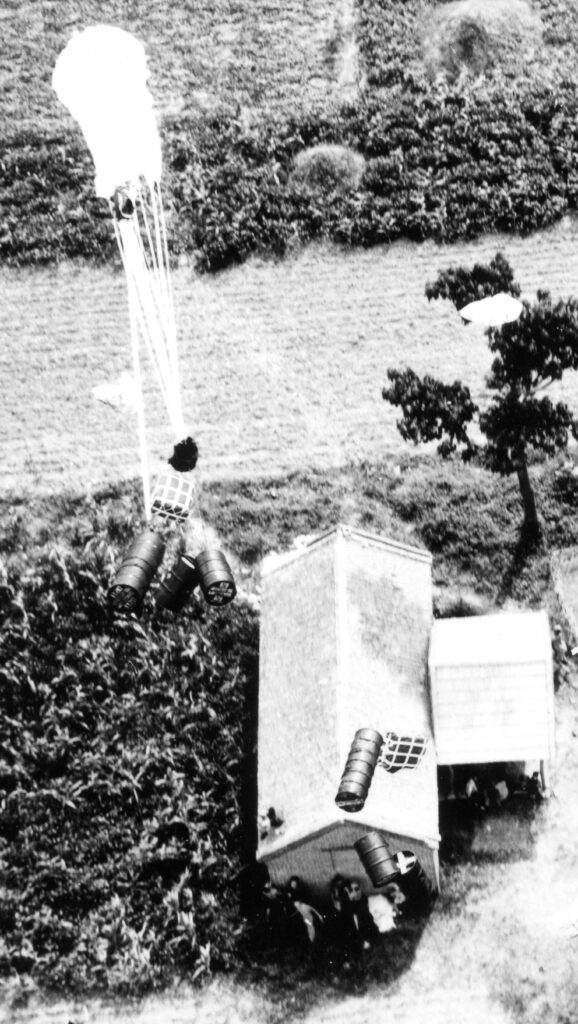Japan took some 132,000 American, British, Canadian, New Zealander, Dutch, and Australian prisoners of war (POWs) during the WWII. Prisoners of the Japanese were treated appallingly. Overall, 36,000 of them – more than 25% – died of malnutrition and lack of medical care, or as victims of physical abuse, forced labor, medical experimentation, and of both casual and ritual execution. For American POWs in Japanese hands the risk of death was 37%. In contrast, only 1% of Americans taken prisoner by Germany perished.
As soon as hostilities ended plans were put in motion to provide food and medicine to the surviving POWs. Relief flights flown by B-29s parachuted nearly 4500 tons of supplies, food, and medicine to POW camps in Japan, Manchuria, China, and Korea. This pictures below show planes from multiple Bomb Wings on Saipan getting readied for POW flights, aerial photos of POW camps, and of supply drops at POW camps. The relief flights staged from Isely Field were successful, but not without cost. Several B-29s and their crews were lost in the effort, and some POWs were injured or killed by falling supply drums when parachutes failed to open or rigging broke.




